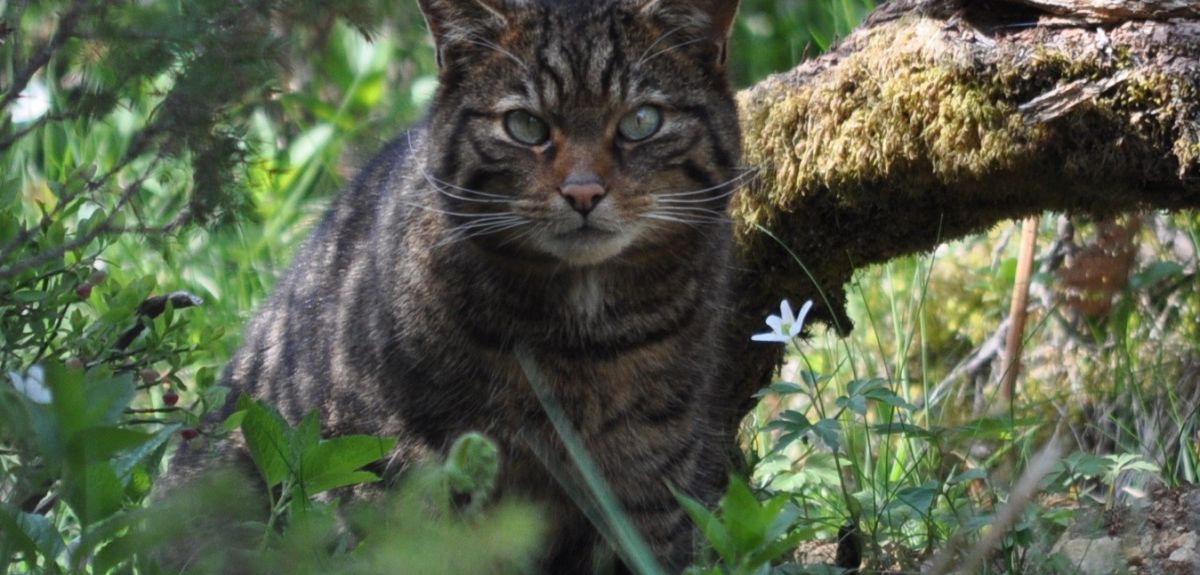
International research transforms understanding of the history of cats in Europe
- Ancient evidence and samples from modern cats analysed to reveal a typical cat story
- Research shows, domestic and wild cats ignored each other for 2,000 years
- Then, in the 1960s, they began to mix
An international team of researchers has found new archaeological and genetic evidence which transforms our understanding of the history of cats in Europe. Domestic cats introduced from the Near East and wildcats native to Europe did not mix until the 1960s, despite being exposed to each other for 2,000 years, according to two research papers published today in Current Biology.
The team sequenced and analysed both wild and domestic cats including 48 modern individuals and 258 ancient samples excavated from 85 archaeological sites over the last 8,500 years. They then assessed the patterns of hybridisation after domestic cats were introduced to Europe over 2,000 years ago and came into contact with native European wildcats.
Wildcats and domestic cats have only hybridised very recently. It is clear that hybridisation is a result of modern threats common to many of our native species
Jo Howard-McCombe, University of Bristol
The results of the studies demonstrate that, since their introduction, domestic cats and European wildcats generally avoided mating. But, about 50 years ago in Scotland, that all changed. Perhaps as a result of dwindling wildcat populations and a lack of opportunity to mate with other wildcats, rates of interbreeding between wild and domestic cats rose rapidly.
Jo Howard-McCombe from the University of Bristol and the Royal Zoological Society of Scotland explains, ‘Wildcats and domestic cats have only hybridised very recently. It is clear that hybridisation is a result of modern threats common to many of our native species. Habitat loss and persecution have pushed wildcats to the brink of extinction in Britain. It is fascinating that we can use genetic data to look back at their population history, and use what we have learnt to protect Scottish Wildcats.’
Professor Greger Larson, from the University of Oxford, says, ‘We tend to think of cats and dogs as very different. Our data suggests that, at least with respect to avoiding interbreeding with their wild counterparts, dogs and cats are much more similar to each other than they are to all other domestic animals. Understanding why this is true will be fun to explore.’
We tend to think of cats and dogs as very different. Our data suggests that...dogs and cats are much more similar to each other than they are to all other domestic animals
Professor Greger Larson, University of Oxford's Schools of Archaeology
Professor Mark Beaumont, from the University of Bristol, adds, ‘The nature of the Scottish wildcat and its relation to feral domestic cats has long been a mystery. Modern molecular methods and mathematical modelling have helped to provide an understanding of what the Scottish wildcat truly is, and the threats that have led to its decline.’
Domestic animals including cattle, sheep, goats, dogs, and pigs have been closely associated with people since the emergence of farming communities more than 10,000 years ago. These tight relationships led to the human-mediated dispersal of plants and animals well beyond their native ranges.
The nature of the Scottish wildcat and its relation to feral domestic cats has long been a mystery. Modern molecular methods and mathematical modelling have helped to provide an understanding of what the Scottish wildcat truly is
Professor Mark Beaumont, University of Bristol
Over the last decade, genomic sequences of modern and ancient individuals have revealed that, as domestic animals moved into new regions, they interbred with closely related wild species, which has dramatically altered their genomes. This pattern has been seen in every domestic animal, except dogs. It would be fascinating to know whether domestic cats interbred with European wildcats, but the decline of native wildcat populations across Europe, and the lack of ancient cat genomes has made it difficult to do so.
The two studies, were carried out at universities in Munich, Bristol, Oxford and the Royal Zoological Society of Scotland.
 Landmark study definitively shows that conservation actions are effective at halting and reversing biodiversity loss
Landmark study definitively shows that conservation actions are effective at halting and reversing biodiversity loss
 Researchers find oldest undisputed evidence of Earth’s magnetic field
Researchers find oldest undisputed evidence of Earth’s magnetic field
 Honorary degree recipients for 2024 announced
Honorary degree recipients for 2024 announced
 Vice-Chancellor's innovative cross-curricular programme celebrated
Vice-Chancellor's innovative cross-curricular programme celebrated
 New database sheds light on violence in Greek detention facilities
New database sheds light on violence in Greek detention facilities